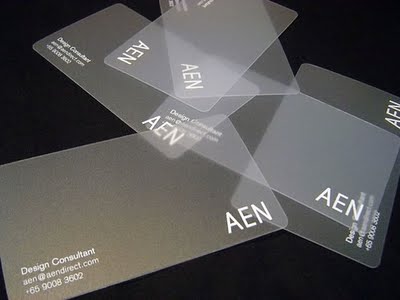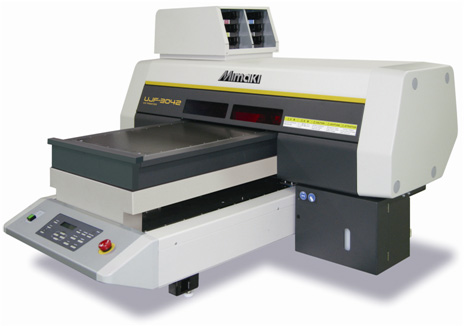Should the printer be printed in white?
Standard printer palettes imply CMYK color schemes, but in some cases the printing device comes with a white cartridge. This seemingly strange function is really needed when it comes to creating souvenirs and in some other very specific situations.
Before we start talking about printers that use white for printing, let's talk a little about getting colors and shades by mixing. Those who went to art school as a child or simply liked to draw can remember what a palette is and even mix gouache paints again in order to recreate a house in a village or a hare on the edge of the forest on a piece of paper. However, it is not for nothing that artists include white in the palette; in fact, how many colors do not mix, it turns out dirty brown at best.

')
On the other hand, if we recall those times when DVI and HDMI cables had not yet supplanted standard analog monitor interfaces, all those who were keen on computer technology knew that the monitor connection interface is called RGB (and they guessed what it means Red, Green, Blue - three colors, used to create all shades on the screen). The fact is that mixing blue, red and green light in various proportions already allows you to get any shade. And the number of possible colors depends on the granularity of changes in the ratios of the original components.

As we have already said, 4 colors are commonly used in the printer palette - the fact is that black printing is very popular for printing on white media, and it is logical to use a separate cartridge for this function, which is subject to more frequent replacement than color ones. What does the printer do when it needs to get white? Nothing! The drivers of most printers do not provide the function of printing white, since by default it is considered that the original printed material is already white. Thus, white = background, and if you are printing a document or drawing on pink paper, it will be pink.
However, it is possible that you need to make an imprint, say, on a transparent film, to stick it on a black or, say, blue mug. Or maybe you need to make an inscription on a red T-shirt or print your company logo on dark green openers for beer. In this case, white can not do. At the same time, it is impossible to get white color by mixing other colors.
Therefore, in order to solve the problem of authentic printing on colored surfaces, manufacturers began to teach printers to print in true white. However, this is not often the case in modern technology, and this is not surprising, since most of us still print on white paper — ordinary office paper, as well as glossy or matte photo paper. Printing the same white color remains the lot of manufacturers of souvenirs, and devices using a white cartridge, are much more expensive than similar printers without such a function.

Most white ink printers are designed for printing on non-traditional surfaces and are designed to create different aesthetic effects. Recently, we have already mentioned the MIMAKI UJF-3042 printer, which can print on any surfaces, if the object’s thickness does not exceed 5 cm. It uses 6 solid ink cartridges — the standard 4 colors are complemented with white as well as a special varnish that protects printouts from environmental influences.

Another example is the Epson Stylus Pro WT7900 printer, which has been sold in Russia since 2010. This model uses water-soluble dyes for printing on labels, labels, films and metal surfaces. White in this case is only one of 9 colors included in the printer's palette.

Meanwhile, an interesting initiative was taken by OKI, which presented standard A3 and A4 format printers (C711WT and C920WT), which are printed with white toner using LED dye transfer technology. These models use standard three colors — cyan, magenta, and yellow, but instead of black, they are equipped with white toner. And although the new OKI printers will not cope with the task of direct printing on "thick" objects, they support the ability to create images on films for later transfer.

As for printers OKI, C920WT, printing on A3 format also costs more than 300 thousand rubles, and his younger brother, C711WT - a little more than 100 thousand rubles. Of course, there are still a small number of printers that can print with white ink, so I’ll be glad if you add to my list in the comments.
Before we start talking about printers that use white for printing, let's talk a little about getting colors and shades by mixing. Those who went to art school as a child or simply liked to draw can remember what a palette is and even mix gouache paints again in order to recreate a house in a village or a hare on the edge of the forest on a piece of paper. However, it is not for nothing that artists include white in the palette; in fact, how many colors do not mix, it turns out dirty brown at best.

CMYK
')
On the other hand, if we recall those times when DVI and HDMI cables had not yet supplanted standard analog monitor interfaces, all those who were keen on computer technology knew that the monitor connection interface is called RGB (and they guessed what it means Red, Green, Blue - three colors, used to create all shades on the screen). The fact is that mixing blue, red and green light in various proportions already allows you to get any shade. And the number of possible colors depends on the granularity of changes in the ratios of the original components.

Rgb
As we have already said, 4 colors are commonly used in the printer palette - the fact is that black printing is very popular for printing on white media, and it is logical to use a separate cartridge for this function, which is subject to more frequent replacement than color ones. What does the printer do when it needs to get white? Nothing! The drivers of most printers do not provide the function of printing white, since by default it is considered that the original printed material is already white. Thus, white = background, and if you are printing a document or drawing on pink paper, it will be pink.
White print
However, it is possible that you need to make an imprint, say, on a transparent film, to stick it on a black or, say, blue mug. Or maybe you need to make an inscription on a red T-shirt or print your company logo on dark green openers for beer. In this case, white can not do. At the same time, it is impossible to get white color by mixing other colors.
Therefore, in order to solve the problem of authentic printing on colored surfaces, manufacturers began to teach printers to print in true white. However, this is not often the case in modern technology, and this is not surprising, since most of us still print on white paper — ordinary office paper, as well as glossy or matte photo paper. Printing the same white color remains the lot of manufacturers of souvenirs, and devices using a white cartridge, are much more expensive than similar printers without such a function.

Pure white is about printing on such transparent business cards.
Real printers
Most white ink printers are designed for printing on non-traditional surfaces and are designed to create different aesthetic effects. Recently, we have already mentioned the MIMAKI UJF-3042 printer, which can print on any surfaces, if the object’s thickness does not exceed 5 cm. It uses 6 solid ink cartridges — the standard 4 colors are complemented with white as well as a special varnish that protects printouts from environmental influences.

MIMAKI UJF-3042
Another example is the Epson Stylus Pro WT7900 printer, which has been sold in Russia since 2010. This model uses water-soluble dyes for printing on labels, labels, films and metal surfaces. White in this case is only one of 9 colors included in the printer's palette.

Meanwhile, an interesting initiative was taken by OKI, which presented standard A3 and A4 format printers (C711WT and C920WT), which are printed with white toner using LED dye transfer technology. These models use standard three colors — cyan, magenta, and yellow, but instead of black, they are equipped with white toner. And although the new OKI printers will not cope with the task of direct printing on "thick" objects, they support the ability to create images on films for later transfer.

As for printers OKI, C920WT, printing on A3 format also costs more than 300 thousand rubles, and his younger brother, C711WT - a little more than 100 thousand rubles. Of course, there are still a small number of printers that can print with white ink, so I’ll be glad if you add to my list in the comments.
Source: https://habr.com/ru/post/181071/
All Articles